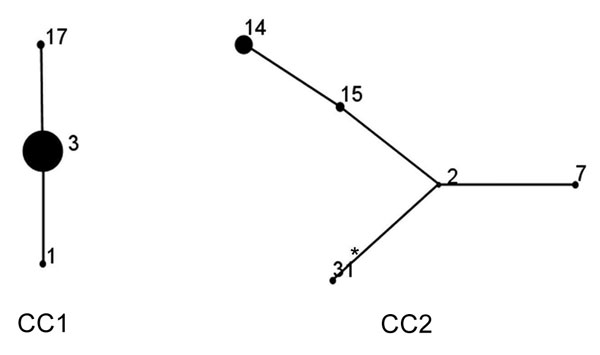Volume 24, Number 8—August 2018
Research
Clonal Expansion of Macrolide-Resistant Sequence Type 3 Mycoplasma pneumoniae, South Korea
Figure 3

Figure 3. Mycoplasma pneumoniae sequence type (ST) relationship of 146 strains by eBURST analysis (http://eburst.mlst.net/), South Korea, 2000–2016. Two main CCs were defined without any singleton. ST3 and ST2 were the predicted founder of each CC. Numbers on the diagram correspond to STs. The size of each circle correlates with the number of isolates of each ST. CC, clonal complex.
1These authors contributed equally to this article.
Page created: July 18, 2018
Page updated: July 18, 2018
Page reviewed: July 18, 2018
The conclusions, findings, and opinions expressed by authors contributing to this journal do not necessarily reflect the official position of the U.S. Department of Health and Human Services, the Public Health Service, the Centers for Disease Control and Prevention, or the authors' affiliated institutions. Use of trade names is for identification only and does not imply endorsement by any of the groups named above.